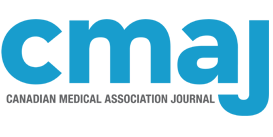Practice
Open Access
Pediatric sialorrhea (drooling)
Karan Gandhi, Julie E. Strychowsky and Breanna A. Chen
CMAJ May 13, 2024 196 (18) E624; DOI: https://doi.org/10.1503/cmaj.231550
Karan Gandhi
Departments of Otolaryngology–Head and Neck Surgery (Gandhi, Strychowsky) and of Paediatrics (Chen), Schulich School of Medicine and Dentistry, Western University; Children’s Health Research Institute (Chen), Lawson Health Research Institute, London, Ont.
MDJulie E. Strychowsky
Departments of Otolaryngology–Head and Neck Surgery (Gandhi, Strychowsky) and of Paediatrics (Chen), Schulich School of Medicine and Dentistry, Western University; Children’s Health Research Institute (Chen), Lawson Health Research Institute, London, Ont.
MD, MASBreanna A. Chen
Departments of Otolaryngology–Head and Neck Surgery (Gandhi, Strychowsky) and of Paediatrics (Chen), Schulich School of Medicine and Dentistry, Western University; Children’s Health Research Institute (Chen), Lawson Health Research Institute, London, Ont.
MD
Article Figures & Tables
There are no figures or tables available.
In this issue
Article tools
Respond to this article
Pediatric sialorrhea (drooling)
Karan Gandhi, Julie E. Strychowsky, Breanna A. Chen
CMAJ May 2024, 196 (18) E624; DOI: 10.1503/cmaj.231550
Jump to section
- Article
- Sialorrhea is common in children with neurologic impairment
- Treatment is guided by adverse effects and the impact on quality of life
- Nonmedical interventions can be beneficial
- Anticholinergic medications have variable efficacy and are titrated based on therapeutic response and adverse effects
- Botulinum toxin injection or surgical interventions may benefit those who do not adequately respond to, or cannot take, medications
- Footnotes
- References
- Figures & Tables
- Related Content
- Responses
- Metrics
Related Articles
Cited By...
- No citing articles found.










